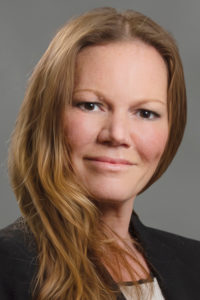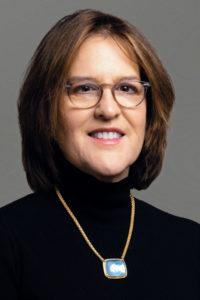This article is sponsored by Cadwalader

William Cowper once wrote that “variety is the very spice of life.” This could ring true in many circumstances, but is becoming particularly fitting for alternative asset managers, or AAM, when evaluating sources of liquidity across a variety of fund finance solutions.
Since the dawn of finance, the differing requirements of debt providers has created a range of financing options across the private and public capital markets. For corporate borrowers, these markets are mature and well understood. However, for AAMs, the debt markets are relatively embryonic and ever evolving, with a range of capital providers. Here we explore the types of capital available to AAMs across the various fund finance products, and the growth of institutional capital in each.*
Turning first to the most developed, widely understood and liquid fund finance product available to AAMs – the subscription facility. This has been a segment of the market historically only serviced by bank lenders. In the past, the primary driver for this, and the barrier for insurance capital in particular, has been prepayment risk, which, due to the revolving nature of subscription facilities has created complexities with matching adjustments under Solvency II. Appetite is evolving, however, and we are starting to see an increase in the availability of this product from non-bank lenders, for a number of reasons:
1. Innovation: Insurers, asset managers and banks are all finding ways to address the Solvency II issue with longer dated trades. This has been achieved either by incorporating prepayment penalties linked to SWAP rates to compensate for the break costs resulting from early repayment, or by the incorporation of term facilities that interact with traditional revolving subscription facilities, which reduces the undrawn element of the main revolving tranche, thus enhancing lenders’ returns (which are diluted by large undrawn commitments), while boosting the internal rate of return for AAMs by terming out capital calls;
2. Revaluation of short-term liquid reserves: There has been a revision in many insurers’ asset allocation and willingness to hold cash, given low yields resulting from money market rates, with insurers shifting assets into short duration subscription facilities (12 months or less) that garner comparatively superior absolute returns.
3. Relative value trade: Third-party rating agencies are now able to rate subscription facilities. Depending on rating methodology and the composition of the investor base, most subscription facilities are rated between BBB and single A. With the focus from insurers and asset managers being, in the main, on relative value, the question is whether rising interest rates will continue to make subscription facilities a reasonable value proposition.

The short answer is expected to be yes – the ICE BofA Single-A US Corporate Index, which takes a weighted average of US investment grade bonds, is currently yielding 4.23 percent for instruments with more than one year until maturity. An investment grade subscription facility will yield in the region of 3.60 percent (SOFRA + margin + annualised up-front fee), for much shorter dated floating rate risk that is less affected by macro-economic credit headwinds. For insurers and asset managers that are less focused on relative value, rising benchmark/risk-free rates enhance the overall yield on an absolute basis, as they do not face corresponding increases in costs from funding themselves in the interbank market
For private funds, the yield of subscription facilities has historically been unattractive. However, for the reasons above, those that hold investments in insurance companies are now looking to the portfolio assets to utilize the capital position and invest in subscription facilities.
Moving next to what was once the opposite end of the liquidity spectrum, general partner financing or management company loans have been sought by AAMs since the inception of the fund finance market in the US and Europe. These facilities were traditionally seen as a relationship tool for the bank lenders that provided subscription financing to the funds managed by the GP/manager, with only a handful of bank lenders able to provide such structures, and subject to a maximum tenor of five or six years.

These facilities have seen the largest shift in both appetite and liquidity, and are perhaps the fund finance structure that has the most parallels with the corporate universe, with the relatively recent development of access for AAMs to insurance capital through the US private placement market, as well as the traditional loan market. This development has largely been driven by the ability of third-party agencies to assign credit ratings to said structures, and is also gaining more interest from credit and secondary funds.
Ratings for GP and ManCo lines are strong investment grade, driven by the contractual cashflows of the management fees, with many agencies considering the payment of such fees as quasi-bank/LP risk, with fee payments often funded by drawdowns under subscription facilities. On a CFADS (cashflow available for debt service) and/or leverage to EBITDA multiple, GP and ManCo lines are comparably more robust than many investment grade corporate facilities.
This risk profile, combined with AAMs’ desire for longer duration capital, opens the door for many more institutional investors to participate in this market. The question will be whether the insurance capital accesses these types of facilities through the US private placement market, where coupons are fixed (typically over US treasuries), or whether capital will be provided by the loan market with a spread over floating risk-free rates/EURIBOR, and whether there is an opportunity to arbitrage the benchmarks.

Finally, NAV facilities are where we have seen the most evolution and interest involving institutional capital over the past few years, particularly moving out of the pandemic. For real asset managers (infrastructure and real estate), credit funds and secondary funds, this is not a new phenomenon, and the bank loan market that has historically served as a reliable source of liquidity is expected to continue to do so for the foreseeable future. For private equity managers, however, access to leverage within the fund structure is a relatively new concept and one that is being increasingly adopted by AAMs.
The collateral/recourse package and covenant terms for NAV facilities will dictate both the yield and type of lender that provides these types of facilities. Private equity NAV facilities can be provided either directly within the fund structure (with or without direct collateral over the underlying investments), or through an orphaned SPV providing a preferred note into the fund structure.
Given the risk profile of underwriting residual equity value for a portfolio of leverage buyout investments, liquidity is almost exclusively provided by direct lending funds, asset managers and the LPs that invest directly in the fund. However, a select few bank lenders can also provide liquidity to these structures. Conversely, the direct recourse facilities tend to have more appetite from the bank market than non-recourse.
Given the infancy of the product, the type of lenders and the highly structured nature of the financings, this remains a very fragmented market where transactions are truly priced to risk rather than “market” based on a number of factors including diversity of portfolio, credit metrics of the underlying assets and experience of the AAM.
In summary, the theory of evolution is not new, and to apply one of Darwin’s presumptions that those that are most adaptable to change are likely to succeed, could have some relevance for the debt markets for AAMs. However, with different demands, requirements and risk appetites from the distinct pools of liquidity, lenders from all sources are likely to have room to co-exist.
*All benchmark rates and yields are sourced from Bloomberg and accurate as of July 5 2022.
Samantha Hutchinson, partner, and Michael Hubbard, head of European GP solutions, are based in London; Angela Batterson and Brian Foster, partners, are in New York


 If you do not receive this within five minutes, please try to sign in again. If the problem persists, please email:
If you do not receive this within five minutes, please try to sign in again. If the problem persists, please email: